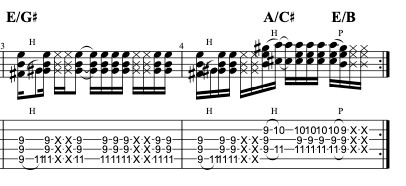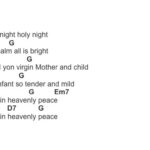If you’re eager to nail that iconic, funky guitar groove in “Listen To The Music” by the Doobie Brothers, you’ve landed in the right place. This guitar lesson is designed to guide you through every step.
However, it’s worth noting upfront that mastering “Listen To The Music” isn’t a walk in the park. Playing these “Listen To The Music” guitar chords and guitar parts requires a solid foundation in some intermediate guitar techniques. We’re talking about skills like hammer-ons, pull-offs, and even incorporating muted scratch strumming with 16th notes to get that authentic feel.
Don’t worry if this sounds a bit advanced right now. This lesson breaks down all the techniques and secrets behind this fantastic guitar style in a clear, step-by-step manner.
So, tighten your guitar strings and get ready to explore this comprehensive “Listen To The Music” guitar lesson!
The Story Behind “Listen To The Music”
“Listen to the Music” stands as one of The Doobie Brothers’ most beloved classics. The song was penned by none other than the band’s frontman, vocalist, and guitarist, Tom Johnston. Released as a single in 1972, it quickly became a hit and was featured on their breakthrough album, Toulouse Street.
Tom Johnston’s inspiration for “Listen to the Music” was beautifully simple yet profound: the unifying power of music. He envisioned music as a force that could bridge divides, fostering community and pure joy. The song undeniably captures this sentiment perfectly. With its inviting chorus, “Oh, oh, listen to the music,” it’s an open invitation for everyone to immerse themselves in the musical experience and feel its uplifting energy.
This powerful track came to life at Warner Bros. Studios in North Hollywood, California. The production is rich with the signature elements of The Doobie Brothers’ distinctive sound – those tight harmony vocals and infectious guitar riffs that are instantly recognizable. “Listen To The Music” climbed to No. 11 on the Billboard Hot 100 chart in the United States and has since become a cultural touchstone, appearing in numerous movies, TV shows, and commercials.
A fascinating detail about the song’s creation is that Tom Johnston reportedly wrote it in a burst of inspiration, in just a matter of minutes. He felt driven by a strong desire to create something positive and joyful. This spontaneous creation is a common thread among many iconic songs. Sometimes, the music seems to exist within the artist’s subconscious, ready to be brought into reality almost effortlessly.
“Listen to the Music” remains a cornerstone of The Doobie Brothers’ live performances. In concert, the band often extends the song, incorporating instrumental solos and engaging with the audience, making it a true highlight of their shows.
If you’re aiming to play this song on your guitar, the first question you might have is about tuning.
Tuning for “Listen To The Music”
Good news for guitarists! “Listen To The Music” by The Doobie Brothers is played in standard tuning. Tom Johnston himself uses standard tuning both in live performances and on the original recording. This means you likely won’t need to retune your guitar to learn this song, making it more accessible to jump right into.
Standard tuning on a guitar is EADGBE. This refers to the pitch of each of the six strings, from thickest to thinnest:
- 6th string: E (lowest pitch)
- 5th string: A
- 4th string: D
- 3rd string: G
- 2nd string: B
- 1st string: E (highest pitch)
Now that we’ve clarified the tuning, let’s get to the heart of playing the song: the guitar chords.
Essential Guitar Chords for “Listen To The Music”
To play “Listen To The Music” on guitar, you’ll need to familiarize yourself with just eight core chords: E, A/C#, C#m, B, A, A7, F#, and D/E. While there are some variations where you’ll play a main chord shape and then modify it into smaller shapes, these are the foundational chords of the song. Let’s explore how to play each of these chords.
The E chord in “Listen To The Music” is often played higher up the neck, in a style popularized by Jimi Hendrix. Here’s how to form this E chord shape:
The A/C# chord is essentially an A chord in first inversion, meaning the third of the chord (C#) is in the bass. This chord shape is prominent in the main riff and creates a smooth transition from the E chord to the A chord. This movement is also known as a I-IV chord change in music theory. Here’s the diagram:
The C#m (C sharp minor) chord is played at the 4th fret position. While often considered a barre chord, you can play it without barring if you use the fingering shown below:
The B chord is played as a barre chord at the 7th fret. This chord can be challenging for beginner guitarists, especially if you’re new to barre chords. However, consistent practice will make it easier. Here’s the finger placement:
The A chord shape used in “Listen To The Music” is the same shape as the B chord, just shifted down two frets. Simply move the B barre chord shape down two frets to play the A chord:
Throughout the song, you’ll frequently encounter the A chord, which then transitions to an A7. The A7 chord adds a bluesier flavor to the progression. To switch from A to A7, simply lift your pinky finger from the A chord shape while maintaining the barre:
The F# chord is another barre chord, this time positioned at the 2nd fret. This is a movable major barre chord shape that you can use across the fretboard to play other major chords:
Lastly, we have the D/E chord, which appears in the bridge section of the song. It shares a similarity with the initial E chord shape but is moved down two frets while keeping an E note in the bass. The D/E is a slash chord, where the bass note (E) is different from the root note of the chord (D). This creates a suspended or unresolved quality, often used to build tension or create movement in a chord progression. The D/E chord consists of the notes D, F#, and A, with E as the bass note.
With the chords under your fingers, let’s dive into the rhythmic foundation of the song: the strumming pattern.
Mastering the Strumming Pattern
The rhythmic backbone of “Listen To The Music” is a funky 16th-note rock groove. Strumming 16th notes on guitar means dividing each beat in a 4/4 time signature into four subdivisions.
To effectively strum 16th notes, understanding how to count them within a measure is crucial. In 4/4 time, each measure contains four beats. When we subdivide each beat into 16th notes, we get four equal parts per beat, totaling sixteen 16th notes in each measure.
The common way to count 16th notes uses the following syllables:
1 e & a 2 e & a 3 e & a 4 e & a
Here’s a breakdown of what each syllable represents:
1: The downbeat (first 16th note of the beat)
e: The second 16th note
&: The third 16th note
a: The fourth 16th note
When counted aloud, it sounds like:
“One ee and uh, Two ee and uh, Three ee and uh, Four ee and uh”
When strumming 16th notes, your strumming hand should maintain a consistent up-and-down motion. Here’s a basic strumming pattern to get you started with the 16th note feel:
- Downstroke on the count “1”
- Upstroke on the count “e”
- Downstroke on the count “&”
- Upstroke on the count “a”
This continuous motion is key to maintaining even and steady timing.
However, it’s important to note that in “Listen To The Music,” you don’t strum every single 16th note. This 16th note counting is more about establishing the feel of the rhythm. The actual strumming pattern in the song is more syncopated and emphasizes certain 16th notes while leaving out others to create that funky groove.
Here’s an example of a simplified strumming pattern and riff in the style of “Listen To The Music”:
 Listen To The Music Guitar Tab Example for Strumming Pattern
Listen To The Music Guitar Tab Example for Strumming Pattern
Exploring the Key of “Listen To The Music”
“Listen To The Music” by The Doobie Brothers is composed in the key of E major. All the chords in the song have specific relationships to each other based on the E major scale. The E major scale consists of these notes: E, F#, G#, A, B, C#, and D#. Let’s see how each chord we’ve learned fits into the key of E major:
E Major (I)
E Major is the tonic or root chord in the key of E major. It’s built on the first degree of the scale (E), and includes the notes E, G#, and B. It serves as the home base of the key.
A Major (IV)
A Major is the subdominant chord in E major, built on the fourth scale degree (A). It contains the notes A, C#, and E. The A major chord often leads to the dominant chord (B major) or back to the tonic (E major), providing harmonic stability. In “Listen To The Music,” the A major chord is made dominant throughout much of the song, which technically moves it outside the strict key of E major. However, this creates a bluesy or jazzy and very characteristic flavor.
C# Minor (vi)
C# Minor is the vi chord in E major. It’s a minor chord built on the sixth scale degree (C#), containing the notes C#, E, and G#. This chord typically adds a touch of melancholy or introspection to the progression.
B Major (V)
B Major is the dominant chord in E major, built on the fifth scale degree (B). It consists of the notes B, D#, and F#. The B major chord creates harmonic tension that strongly resolves back to the tonic (E major), making it vital for creating a sense of musical resolution.
F# Major (II)
F# Major is the II chord in the key of E major. It’s a major chord built on the second scale degree (F#), containing the notes F#, A#, and C#. While typically the diatonic ii chord in a major key is minor (f# minor), the use of F# major here is a common and effective technique found in many popular songs, adding harmonic interest.
D/E (bVII/I)
D/E is a D major chord with an E in the bass. This chord is often heard in rock music. The D/E chord creates a suspended or unresolved tension that naturally resolves to the tonic chord (E major).
Conclusion: Keep the Music Playing
In conclusion, “Listen To The Music” by The Doobie Brothers is truly a timeless song. It perfectly illustrates the power of a compelling groove combined with a memorable melody to resonate with audiences worldwide.
Keep practicing these “Listen To The Music Guitar Chords” and techniques, and you’ll be playing this classic song in no time. With dedication and the right guidance, you can master this song and expand your guitar skills.

